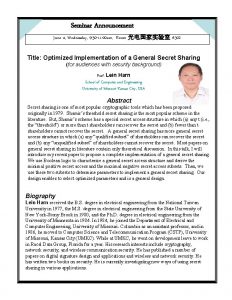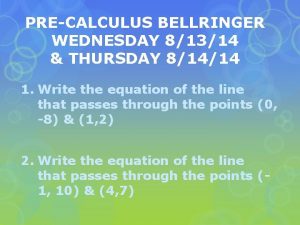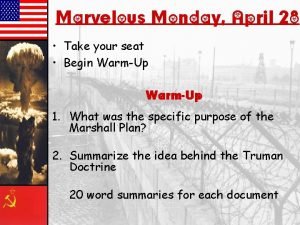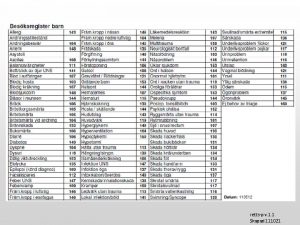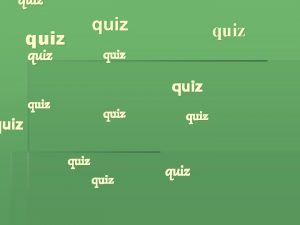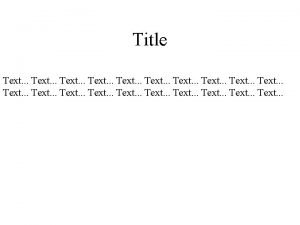Review for Quiz 5 Wednesday 111021 Text Chapter

















![Example of pair search for CFG E->T|E+T T->F|T*F F->I|(E) I->a|Ia [E, E] basis [T, Example of pair search for CFG E->T|E+T T->F|T*F F->I|(E) I->a|Ia [E, E] basis [T,](https://slidetodoc.com/presentation_image_h2/1bfda65b2d619b4573d2561ddf8dd189/image-18.jpg)



- Slides: 21

Review for Quiz 5, Wednesday 11/10/21 Text Chapter 5 Lecture L 10 -13 Homework 12 & 13 1

Components of a CFG Terminals, Variables, Start symbol, Productions Derivations Connections between start symbol and terminal strings that define the content of a CFL Formal definition of a CFL L(CFG) = {w in T* | S =>* w} Each step in =>* uses a production in the CFG 2

Examples of derivations: derive string 000111 in { 0 n 1 n | n > 1} Productions are S -> 01; S -> 0 S 1. S => 0 S 1 => 00 S 11 => 000111 Replace S by 0 S 1 as many times as needed Complete by replacing S by 01 3

Example: Leftmost/Rightmost Derivations Balanced-parentheses grammar: S -> SS | (S) | () perform S =>*lm (())() perform S =>*rm (())() S =>lm SS =>lm (S)S =>lm (())() S =>rm S() =>rm (S)() =>rm (())() 4

Parse tree is the same for lm and rm derivations Derivation of (())() in S -> SS | (S) | () S => SS => (S)S => (())() S S ( ) ) ( ) Yield: (())() 5

Ambiguous CFG More than one way to use content of a CFG to derive the strings in L(CFG) Proof of ambiguity For any string in L(CFG) there exist 2 distinct left-most derivations, 2 distinct right-most derivations, or 2 distinct parse-tree derivations 6

S -> SS | (S) | () is ambiguous Prove by 2 lm derivations of ()()() S=>SSS=>()()S=>()()() S=>SS=>()SS=>()()() 7

Ambiguous CFGs Sometimes 2 ways to start a derivation causes ambiguity, as demonstrate in HW 12. Derivations of aab can start with either S=>a. S or S=>a. Sb. S. Blocking 1 way can remove ambiguous derivation of a given string but does not prove that the resulting CFG is unambiguous 8

LL 1 CFGs are intrinsically unambiguous LL 1 -> left-most derivation look ahead 1 production Example for balance parenthesis CFG B -> (RB | ε R -> ) | (RR B is the start symbol Derivations must start with B ->(RB To expand with “(“, use R->(RR To expand with “)”, use R ->) End with B->e 9

Inherently ambiguous CFG: two left-most derivations on some strings cannot be avoided • The language {0 i 1 j 2 k | i = j or j = k} is inherently ambiguous. • At least some of the strings of the form 0 n 1 n 2 n can be generated by two left-most derivations depending on which you check 1 st: equal number of 0’s and 1’s or equal number of 1’s and 2’s. 10

Example of ambiguous grammar for {0 i 1 j 2 k | i = j or j = k} S -> AB | CD A -> 0 A 1 | 01 B -> 2 B | 2 C -> 0 C | 0 D -> 1 D 2 | 12 A generates equal 0’s and 1’s B generates any number of 2’s C generates any number of 0’s D generates equal 1’s and 2’s 2 lm derivations of 012 lm: S => AB => 01 B =>012 lm: S => CD => 012 Similarly for n=2 11

CFGs in Chomsky Normal Form (HW 13) CFG -> clean CFG -> CNF CFG -> clean CFG remove e-productions find nullable variables remove Variable ->e productions make families from products that contain nullable variables remove unit productions expansion and pair search remove useless variables non-generating and/or non-reachable 12

Example: Eliminating ε-Productions S->ABC, A->a. A|ε, B->b. B|ε, C->ε A, B, C, and S are all nullable. Productions S->ABC|AB|AC|BC|A|B|C come from S->ABC Productions A->a. A|a come from A->a. A Productions B->b. B|b come from B->b. B 13

Eliminating ε-Productions continued Removing A->e, B->e, C->e makes C is not generating Eliminate C in productions of the new CFG S -> ABC | AB | AC | BC | A | B | C A -> a. A | a B -> b. B | b 14

A unit production is a production whose right side consists of exactly one variable. A->a is not a unit production because a is terminal Eliminating unit production by expansion is the most common approach 15

Eliminate by expansion In the CFG defined by E->T|E+T T->F|T*F F->I|(E) I->a|Ia Keep I->a|Ia Expand F->I|(E): F->a|Ia|(E) Expand T->F|T*F: T->a|Ia|(E)|T*F Expand E->T|E+T: E->a|Ia|(E)|T*F|E+T 16

Alternative to eliminate unit productions by expansion Find all pairs (A, B) such that A=>*B by a sequence of unit productions only. Basis: A=>*A, therefore (A, A) selected. Induction: If we have found (A, B), and B->C is a unit production, then add (A, C) to the pair list. 17
![Example of pair search for CFG ETET TFTF FIE IaIa E E basis T Example of pair search for CFG E->T|E+T T->F|T*F F->I|(E) I->a|Ia [E, E] basis [T,](https://slidetodoc.com/presentation_image_h2/1bfda65b2d619b4573d2561ddf8dd189/image-18.jpg)
Example of pair search for CFG E->T|E+T T->F|T*F F->I|(E) I->a|Ia [E, E] basis [T, T] basis [F, F] basis [I, I] basis [E, T] E->T [T, F] T->F [F, I] F->I [E, F] T->F [T, I] F->I [E, I] F->I Associate each pair with a non-unit production 18

Combine pair search with non-unit productions (E, E) E->E+T (E, T) E->T*F (E, F) E->(E) (E, I) E->a|Ia (T, T) T->T*F (T, F) T->(E) (T, I) T->a|a. I (F, F) F->(E) (F, I) F->a|Ia (I, I) I->a|Ia Original CFG with unit productions E->T|E+T T->F|T*F F->I|(E) I->a|Ia New CFG with no unit productions E->E+T|T*F|(E)|a|Ia T->T*F|(E)|a|Ia F->(E)|a|a. I I->a|Ia same as by expansion 19

Clean to CNF Step 1: For each right side not a single terminal, make the right side all variables. Step 2: Break right sides longer than 2 into a chain of productions with right sides of two variables using “cascade of productions” text p 273 Do not combine steps 2 and 3. Show all strings of variables before applying cascading productions Example of cascading productions: A->B 1 B 2 B 3 B 4 is replaced by A->B 1 C 1, C 1 ->B 2 C 2, and C 2 ->B 3 B 4. 20

Assignment 13 Exercise 7. 1. 2 text p 275 and 277 S->ASB|e A->a. AS|a B->Sb. S|A|bb Clean and convert to CNF 21
 What is an example of a text-to-media connection?
What is an example of a text-to-media connection? Jag har nigit för nymånens skära
Jag har nigit för nymånens skära Chapter review motion part a vocabulary review answer key
Chapter review motion part a vocabulary review answer key Monday tuesday wednesday thursday friday calendar
Monday tuesday wednesday thursday friday calendar Wednesday evening prayer
Wednesday evening prayer Wednesday seminar
Wednesday seminar Ib grades to percentage
Ib grades to percentage Michelle hansberry
Michelle hansberry Again
Again Good morning happy february
Good morning happy february Monday my favorite day
Monday my favorite day Skinny wednesday
Skinny wednesday Flmsg download
Flmsg download Monday saturday thursday
Monday saturday thursday Wise word wednesday
Wise word wednesday Happy wednesday march
Happy wednesday march Monday tuesday wednesday thursday friday saturday sunday
Monday tuesday wednesday thursday friday saturday sunday English class is wednesday
English class is wednesday Wednesday journal prompts
Wednesday journal prompts Wednesday bellwork
Wednesday bellwork Wednesday bellringer
Wednesday bellringer Marvelous monday terrific tuesday wonderful wednesday
Marvelous monday terrific tuesday wonderful wednesday





